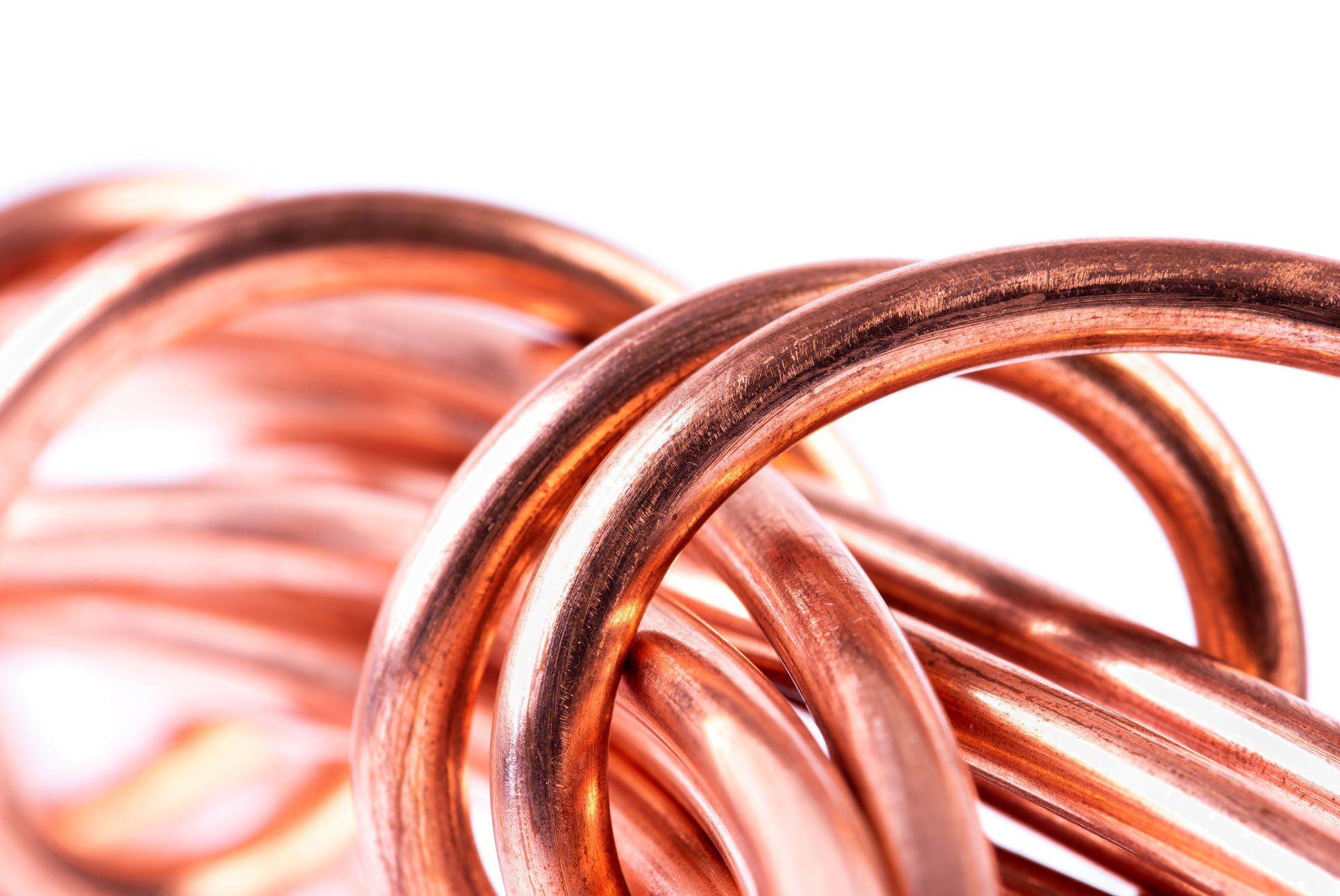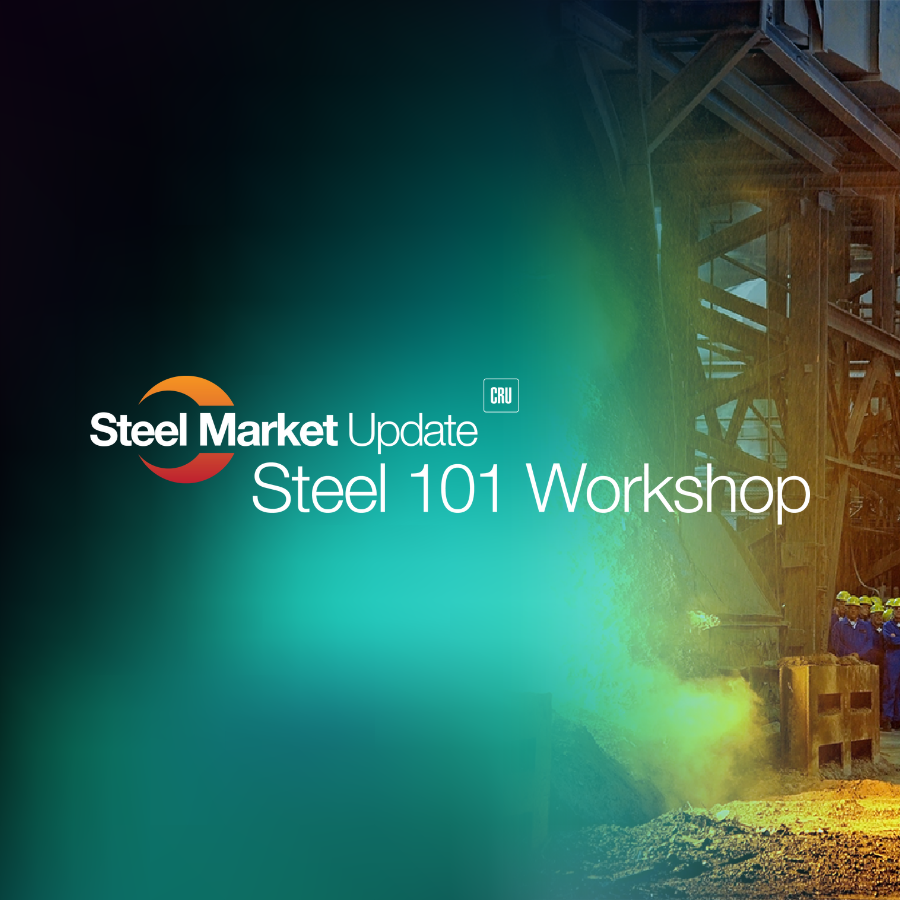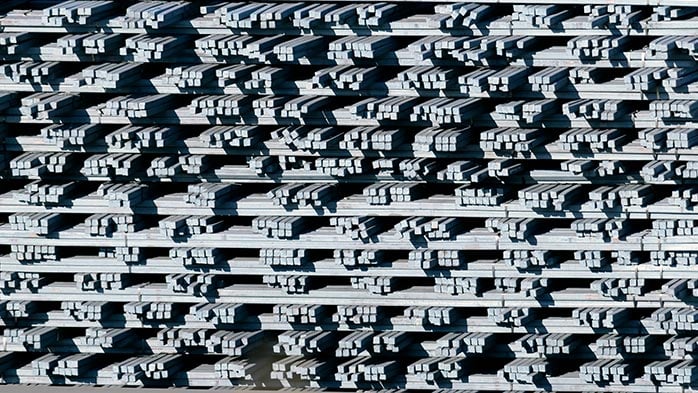China recently became the world’s largest exporter of cars. Experience from the steel industry suggests this is not a trend that will reverse, though it might reduce. Changes in auto supply chains and metals demand outside China are likely.
China is now the world’s largest car exporter
China recently became the world’s largest exporter of cars, following an upward inflection point in its export volumes that happened in 2020:
We have seen this pattern before in the steel industry. Here the upward inflection point happened almost 20 years ago, in 2004:
In steel, Chinese exports never went back
One thing that is immediately clear from steel is that, although there was considerable year to year volatility in export volumes after this inflection point, they never fell back to anything remotely close to their preceding level for any significant period of time. Exports from China have remained a huge structural feature of the world market.
Steel exports were incentivised by good margins available elsewhere and facilitated by low costs
Until recent years Chinese steel exports were facilitated by the country’s low costs on the global scale. For most of the past 20 years China was a first quartile producer:
Exports from China were also an attractive option for its mills because returns available domestically were often lower than those in offshore markets:
Domestic production fell in mature import regions
Domestic steel production trends outside China in the past 20 years have varied by region. In some regions, like Southeast Asia, the Middle East or India, both steel demand and domestic supply grew. Demand in the developed regions of North America, Europe and Northeast Asia has shrunk in the past 20 years. In Northeast Asia domestic production has been maintained amid this decline, but in North America and Europe production has fallen by more than demand. This is potentially linked to the rise of export volumes from China, which whether directly or indirectly have competed with marginal tonnes in other markets.
China is exporting a lot of EVs, and a lot to Europe
In cars, while there has been growth to most destinations, Europe stands out as a particular target for Chinese exports:
And a large, and rising share of Chinese cars are EVs, especially to Europe:
Cost competitiveness and EV market opportunity should sustain car exports
Although the average unit value of Chinese car exports has increased, Chinese exports remain competitively priced, facilitated by a competitive cost base:
China is also selling into an attractive market. Demand growth is expected to remain extremely strong for non-ICE vehicles. CRU forecasts that globally this will increase by well over 100% by 2030:
The read-across from the steel industry experience is that domestic production outside China is challenged and will need to respond to this challenge. Chinese exports are not likely to be entirely put back in the box.
Changes in metals supply chains could result
The rise of EVs is already changing metals demand patterns. Some different steels are needed for an EV and, overall less, with more competition from aluminium to offset the heavy battery, though that dynamic may change over time with technology developments.
If China were to displace EV manufacturing in the rest of the world, then it is likely that the supply chains of those non-Chinese OEMs will also be displaced by companies in China. This would reduce metals demand outside China from what it would otherwise have been, additional to the reduction that is anyway expected from the switch away from ICEs.
How might the auto industry outside China respond?
Some further detail on this topic was previously published by CRU’s Battery Metals team, available here.
One of the things that happened in steel was that several of the big import markets put up antidumping and anti-subsidy barriers against Chinese product. These were quite effective in stopping direct imports to those markets. However, Chinese exports continued to indirectly impact them in multiple ways. One example was re-rolling of Chinese substrate in a third country and sale of the downstream product to the protected import market. Some subsequent trade barriers have been erected to counter this, including the use of anti-circumvention cases. Another example is that of displacement: for example, China exports to Türkiye, competing with its local mills, which then increase their exports to Europe.
Similar trade barriers on cars are in public discussion and it is possible they could be imposed. It may be possible instead, or as well, that other elements like labour or environmental standards could be used to limit direct imports of Chinese cars. In similar vein, OEMs outside China could look to position their vehicles as an environmentally or socially responsible choice, though the credibility of the former will depend a great deal on sourcing low emissions metals to minimise Scope 3 emissions. But there are certainly options.
It follows that we do not forecast the death of the auto industry outside China. Rather, trade and other policy measures are likely to drive a trend towards more localisation of manufacturing, or ‘build where you sell’ and this may dampen – though not remove – future inter-regional trade flows.
As part of that movement, Chinese car manufacturers are keen to make their mark in Europe's demanding car market. At the forefront, SAIC Motor is identifying potential sites for a European factory devoted to EV production. Geely-owned Volvo plans to build a third manufacturing plant. Concurrently, BYD is reportedly amongst the bidders for Ford's German plant and intends to establish at least one production facility in Europe.
Nevertheless, downward pressure is likely to increase on OEM margins and in turn this is likely to cause a renewed drive for efficiencies and cost savings on input materials and manufacturing processes. Stellantis recently indicated as much at its latest results discussion.
It is also possible that OEMs might seek further mergers and joint ventures in search of procurement savings and/or manufacturing efficiencies. Potentially that could trigger matching consolidation efforts in the Tier suppliers. Operating practices at Chinese OEMs might be an area that other OEMs would look at adopting. These could be manufacturing techniques or corporate structures and strategies. It is notable that vertical integration is more widespread in China, for example.
One low-probability scenario could be that OEMs pursue investment in e-fuels or other means to prolong the existing ICE ecosystem, or in things like hydrogen fuel cells rather than batteries to compete less directly with China. Germany already successfully secured an exemption for vehicles run on e-fuels from the EU’s ban on new ICE vehicle sales, which will come in 2035. However, significant challenges such as unproven technology, complex supply chains, and high costs present obstacles to large-scale production. While e-fuels and other alternatives could conceivably play a niche role, we think it is likely that battery electric vehicles remain the dominant technology. But Germany’s intervention in this regard offers an interesting example of how self interest can trump environmental concern.
















